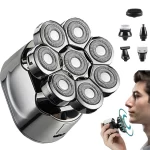Introduction:
Electric shavers have become a popular choice for many individuals due to their convenience, efficiency, and ease of use. Understanding how electric shavers work can help you make an informed decision when choosing the best option for your grooming routine. In this guide, we will explore the inner workings of electric shavers, including their construction, types of blades, cutting mechanisms, power sources, and maintenance. By understanding the functioning of electric shavers, you can make the most out of your shaving experience.
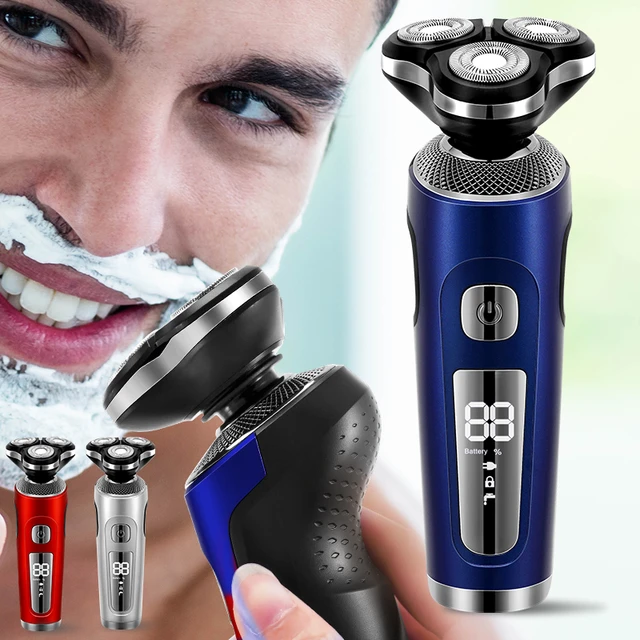
How do electric shavers work?
Construction of Electric Shavers:
Electric shavers are typically composed of the following components:
a. Outer Casing: The outer casing of the shaver provides protection and houses the internal components.
b. Handle: The handle, also known as the grip, allows you to hold and maneuver the shaver during use.
c. Shaving Heads: The shaving heads are the most critical components of an electric shaver. They usually consist of a set of rotating blades or foils that come in contact with the skin during shaving. The number and arrangement of these blades vary depending on the type and model of the shaver.
d. Cutting Elements: The cutting elements, located within the shaving heads, are responsible for trimming the hair. These elements can be either blades or foils, depending on the type of electric shaver.
Types of Blades in Electric Shavers:
Electric shavers utilize two primary types of blades: rotary blades and foil blades. The design and function of these blades differ, providing distinct shaving experiences.
a. Rotary Blades: Rotary blade shavers have circular cutting heads that typically consist of three rotating discs. Each disc has slots or holes that capture and cut the hair as it is guided through the spinning motion. The individual discs can flex and tilt to adjust to the contours of the face, ensuring a close and comfortable shave.
b. Foil Blades: Foil blade shavers feature a set of blades covered by a thin, perforated metal foil. The hair enters through the holes in the foil, allowing the blades underneath to cut the hair. The foil helps lift the hair away from the skin, providing a smooth and close shave. Foil shavers usually have multiple cutting elements arranged in a straight line, ensuring efficient hair removal.
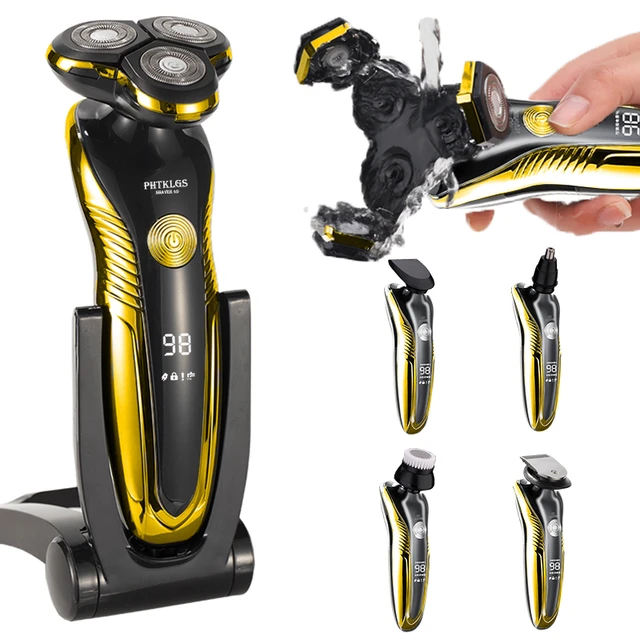
Cutting Mechanism:
The cutting mechanism of an electric shaver depends on the type of blades used. Here’s how the two types work:
a. Rotary Blade Shavers: In rotary blade shavers, the cutting mechanism involves the rotation of the circular cutting heads. As the heads spin, the hair enters the slots or holes on the discs and is cut by the blades inside. The rapid rotation of the discs, combined with the flexibility to adjust to facial contours, ensures effective hair removal.
b. Foil Blade Shavers: For foil blade shavers, the cutting mechanism involves the reciprocating movement of the blades beneath the foil. The blades move back and forth rapidly, cutting the hair that enters through the holes in the foil. The foil helps guide the hair towards the blades, ensuring a clean and precise shave.
Power Sources:
Electric shavers can be powered by different sources, offering flexibility and convenience for users. The common power sources for electric shavers include:
a. Corded Shavers: Some electric shavers are designed to be used while connected to a power outlet via a cord. These shavers provide consistent power throughout the shaving session, eliminating the need to charge or replace batteries. Corded shavers are suitable for individuals who prefer a continuous power supply without worrying about battery life.
b. Disposable Batteries: Some electric shavers utilize disposable batteries, such as AA or AAA batteries. These shavers are convenient for individuals who frequently travel or prefer the option to easily replace the batteries when needed. However, disposable battery-operated shavers may not provide the same power and performance as corded or rechargeable models.
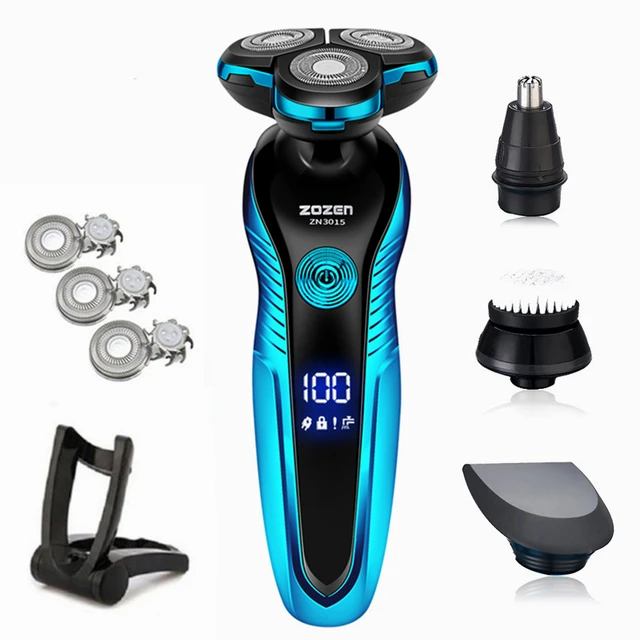
Maintenance of Electric Shavers:
Proper maintenance is crucial to ensure the longevity and optimal performance of electric shavers. Here are some maintenance practices to consider:
a. Cleaning: Regularly clean the shaving heads to remove hair, oil, and debris. Most electric shavers come with a cleaning brush or tools specifically designed for this purpose. Some shavers have self-cleaning functions that use specialized cleaning solutions. Ensure that the shaver is turned off and disconnected from the power source before cleaning.
b. Blade Replacement: Over time, the cutting elements of electric shavers can become dull and less effective. Depending on the model, it is recommended to replace the blades or foils periodically. Follow the manufacturer’s guidelines for the suggested replacement intervals to maintain optimal shaving performance.
c. Lubrication: Some electric shavers require lubrication to ensure smooth operation and protect the cutting elements. Check the manufacturer’s instructions to determine if lubrication is necessary and use the recommended lubricant or oil.
d. Storage: Store the electric shaver in a clean and dry place when not in use. Avoid exposing the shaver to extreme temperatures or humidity, as this can affect its performance and lifespan. If the shaver has a protective cap or case, use it to prevent damage to the shaving heads.
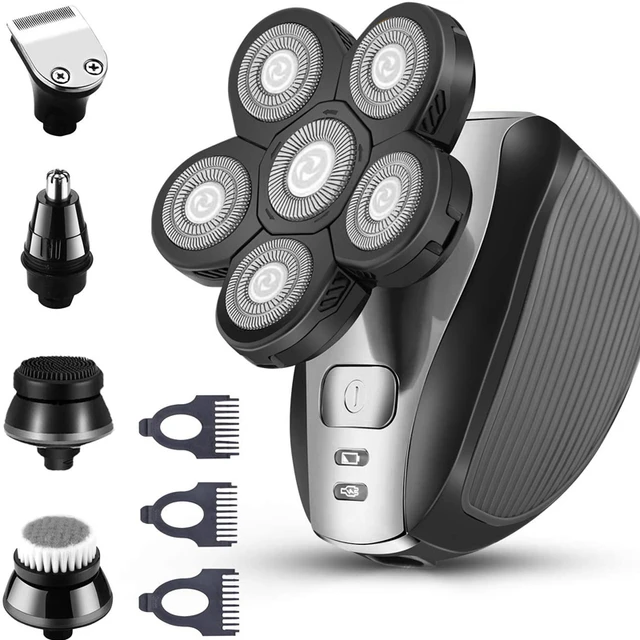
Additional Features and Technology: Electric shavers often come with additional features and advanced technology to enhance the shaving experience. Some common features include:
a. Trimming Attachments: Many electric shavers come with trimming attachments or integrated trimmers. These attachments allow for precise trimming of facial hair, sideburns, or beards, providing versatility in grooming.
b. Adjustable Speed and Intensity: Certain electric shavers offer adjustable speed settings, allowing users to customize the shaving experience based on their preferences and hair type. This feature can be particularly useful for individuals with thicker or longer facial hair.

Conclusion:
Electric shavers offer a convenient and efficient way to maintain a well-groomed appearance. They consist of various components, including the outer casing, handle, shaving heads, and cutting elements. Electric shavers utilize rotary or foil blades to cut hair, with each type providing a distinct shaving experience. The cutting mechanism involves the rotation or reciprocating movement of the blades, depending on the design. Electric shavers can be powered by corded connections, rechargeable batteries, or disposable batteries, offering flexibility and portability. Regular maintenance, including cleaning, blade replacement, lubrication, and proper storage, is essential to ensure optimal performance and longevity. By understanding the inner workings of electric shavers, you can make an informed choice and maximize your shaving experience.

